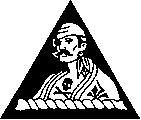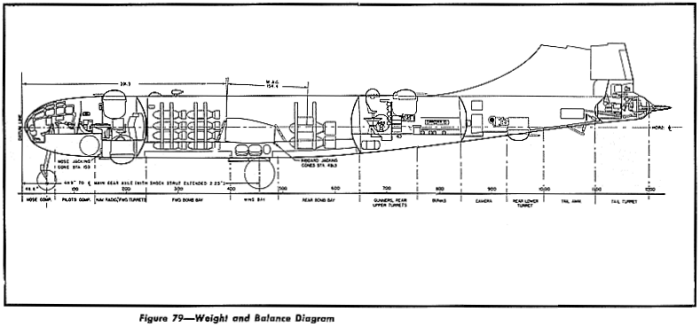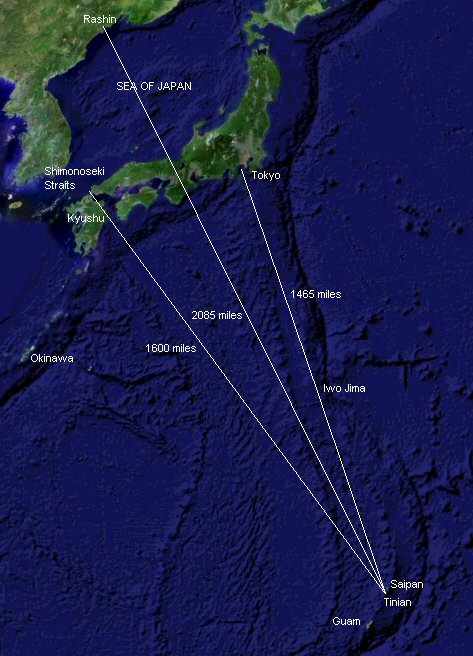

The B-29 was one of the largest WWII bombers powered by 4 of the most powerful engines. Dimensions:
Powerplant:Four Wright R-3350-41 Duplex Cyclone eighteen-cylinder air-cooled radial engines each with two General Electric turbo superchargers, delivering 2,200 hp for takeoff with a war emergency rating of 2,300 hp at 25,000 feet. Range - Published Figures
Compare to Other Bombers:
Weights - Published Figures
Compare to Other Bombers:
|
|---|
Over the course of the war, the 6th Bomb Group received almost 120 aircraft. Most of these aircraft were standard B-29s. The includes 32 B-29As and 2 B-29Bs. The B-29A was slightly different than the B-29. Due to a change in construction methods, it had a 1 foot larger wingspan and the number of machine guns in the forward dorsal turrets was doubled to 4. |
|---|
 |
||||||||||||||||||||||||||||||||||||||||||||||||||||||||||||||||||||||||||||||||||||||||||||||||||||||||||||||||||||||||||||||||||||||||||||||||||||||||||||||||||||||||||||||||||||||
|
|
|||||||||||||||||||||||||||||||||||||||||||||||||||||||||||||||||||||||||||||||||||||||||||||||||||||||||||||||||||||||||||||||||||||||||||||||||||||||||||||||||||||||||||||||||||||
|---|---|---|---|---|---|---|---|---|---|---|---|---|---|---|---|---|---|---|---|---|---|---|---|---|---|---|---|---|---|---|---|---|---|---|---|---|---|---|---|---|---|---|---|---|---|---|---|---|---|---|---|---|---|---|---|---|---|---|---|---|---|---|---|---|---|---|---|---|---|---|---|---|---|---|---|---|---|---|---|---|---|---|---|---|---|---|---|---|---|---|---|---|---|---|---|---|---|---|---|---|---|---|---|---|---|---|---|---|---|---|---|---|---|---|---|---|---|---|---|---|---|---|---|---|---|---|---|---|---|---|---|---|---|---|---|---|---|---|---|---|---|---|---|---|---|---|---|---|---|---|---|---|---|---|---|---|---|---|---|---|---|---|---|---|---|---|---|---|---|---|---|---|---|---|---|---|---|---|---|---|---|---|
 The following should give you a rough idea of the extent to which the Groups were pushing the envelope. Normally, you compute the fuel needed to complete a mission with a safe reserve and then add enough bombs to safely stay within gross weight. The aircraft will have a partial fuel load and a partial bomb load. In the case of the B-29, the Groups kept adding more fuel and more bombs until they essentially reached the maximum capacities of the aircraft. There was nothing more to add. And, yet, the planes still flew! |
|---|
| Units | Weight/Unit | Weight | Range (Est) | ||
|---|---|---|---|---|---|
Empty Weight - Equipped |
78,800 lbs | ||||
Crew - Equipped |
11 men | 200 lbs | 2,200 lbs | ||
Standard Total Fuel Load |
6,940 gals | 6 lbs | 41,640 lbs | 3,070 miles | |
Bombs |
40 bombs | 500 lbs | 20,000 lbs | ||
Ammo (only 100 rnds/gun) |
1,300 rnds | .3 lbs | 390 lbs | ||
Totals |
143,030 lbs | 3,070 miles | |||
Combat Radius (Range/2) |
1,535 miles | ||||
Required Radius |
1,465 miles | ||||
Fuel Reserve |
40 mins |